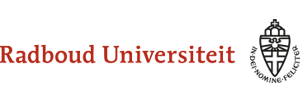American English Phonetics
Another American English Faculty Project
8.5 The consonants of GA and AN
In this section, we present the consonant systems of GA and AN (see Table 1). As in all languages, consonants are firstly divided into obstruents and sonorants. As will be clear, in both languages obstruents divide into homorganic pairs, i.e. pairs whose place of articulation is the same, like /p,b/, /t,d/, /s,z/, etc. In Dutch such pairs consist of a voiceless and voiced member. In GA, by contrast, obstruents like /b,d,z/ are by no means always voiced. These obstruents are fully voiced only between voiced sounds, as in ruby, daisy, lady, etc. In other contexts, GA /b,d,g,v,z,ð,ʒ/ have devoiced or even voiceless allophones. For example, if we compare GA /s/ in price tag with GA /z/ in prize fighter, we are likely to find that they are both completely voiceless, the difference between price and prize being largely a matter of vowel duration. It is for this reason that the terms fortis and lenis are used to refer to GA /p,t,k,f,θ,s,ʃ,t͡ʃ/ and GA /b,d,g,v,ð,z,ʒ,d͡ʒ/ respectively.
When we compare the consonant systems of the two languages, we see that GA has /θ,ð,t͡ʃ,d͡ʒ/ as in thin, this, chin, gin. Conversely, AN has /x/, as in kachel, lag and lach, which consonant does not occur in GA (except for some speakers as a marginal phoneme in loanwords like Bach and Scottish loch).
The AN system has four symbols in brackets, which indicates that these phonemes do not occur in the systems of all AN speakers. AN /g/ and /ʒ/ occur in loanwords only, as in AN goal, stage. And AN /v/ does not always occur in the system of Western (and Frisian) AN speakers, while AN /ɣ/ is virtually confined to the South.
The consonants of GA and AN:
| GA | AN | |||
| fortis | lenis | OBSTRUENTS | voiceless | voiced |
| p,t,k | b,d,g | Stops | p,t,k | b,d,(g) |
| f,θ,s,ʃ,h | v,ð,z,ʒ | Fricatives | f,s,ʃ,x | (v),z,(ʒ),(ɣ),h |
| t͡ʃ, tr | d͡ʒ,dr | Affricates | – | – |
| voiced | SONORANTS | voiced | ||
| m,n,ŋ | Nasals | m,n,ŋ | ||
| l,r,j,w | Approximants | l,j,ʊ | ||
| – | Roll or Flap | r |
